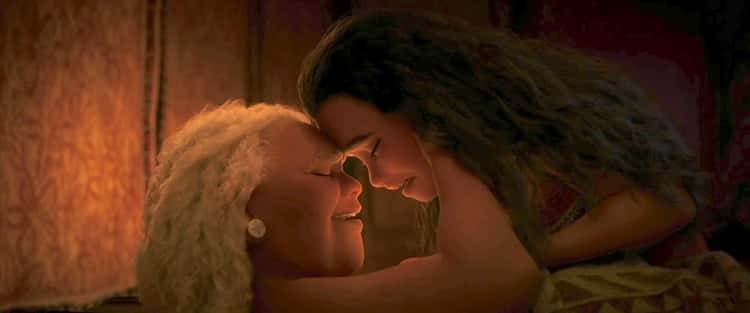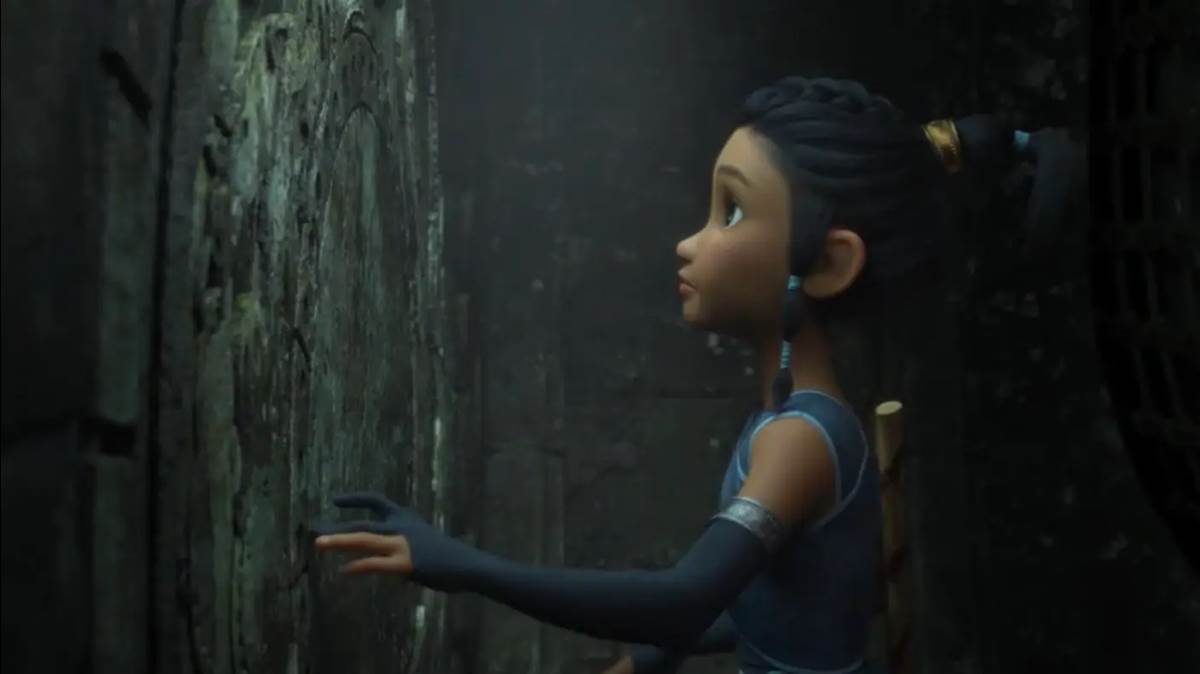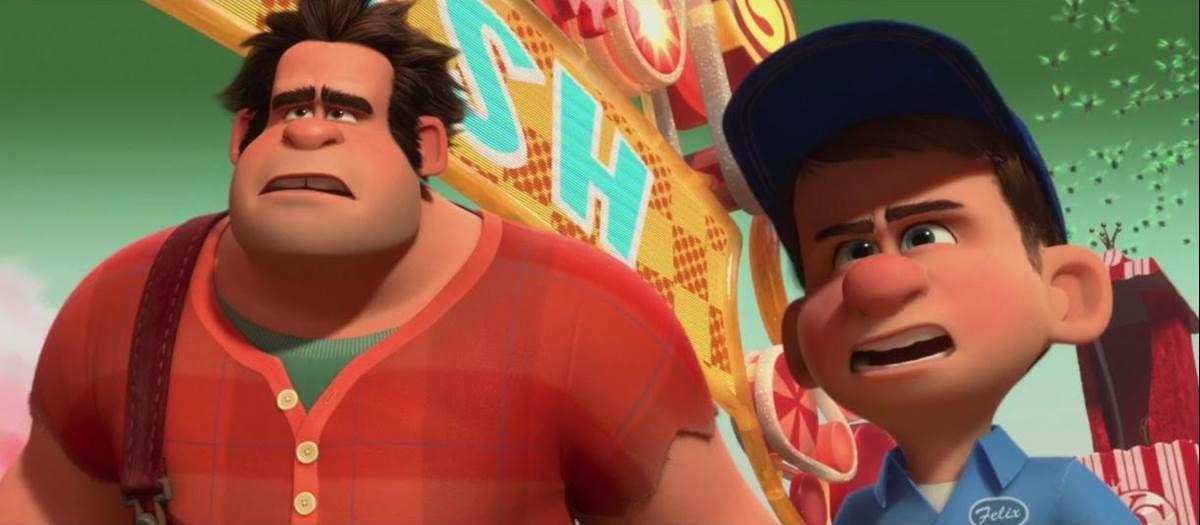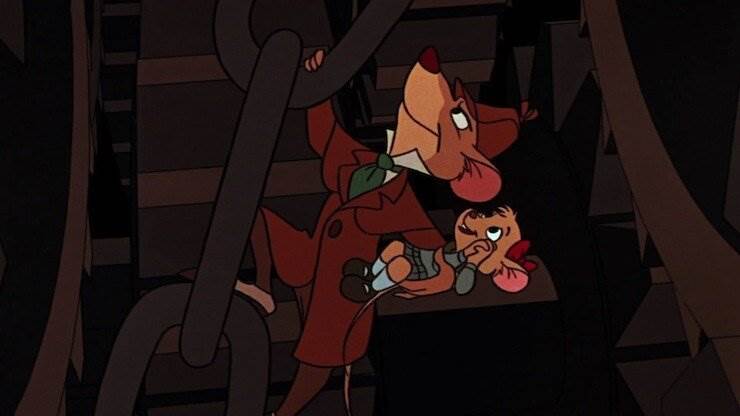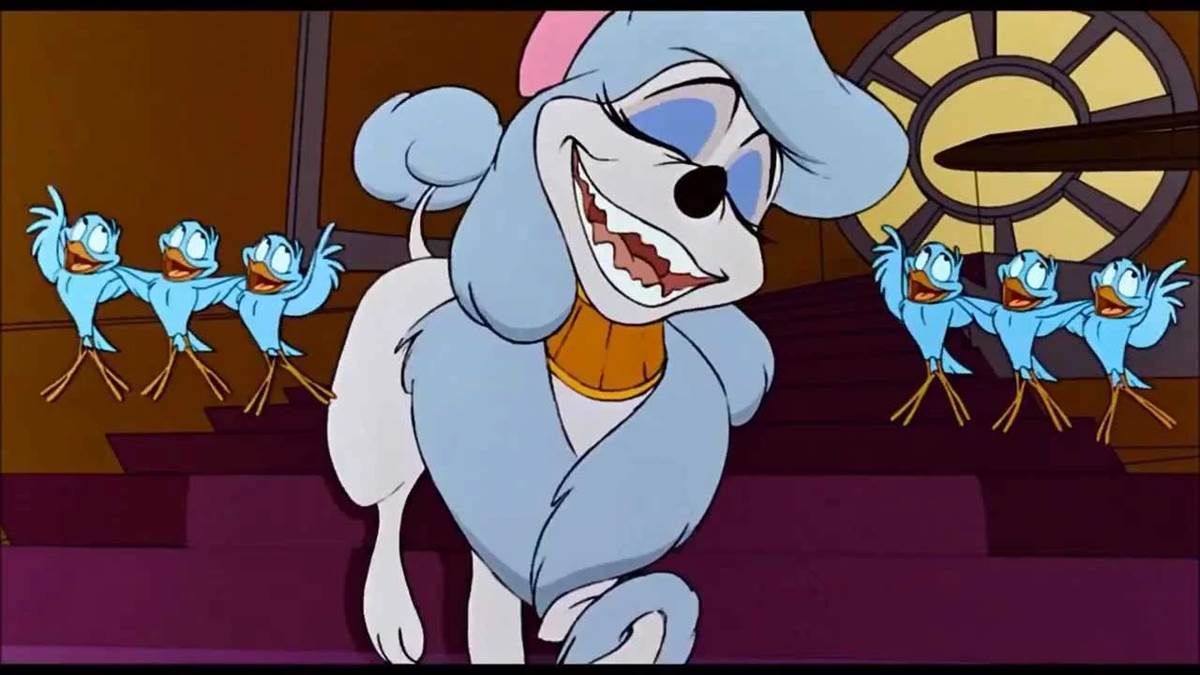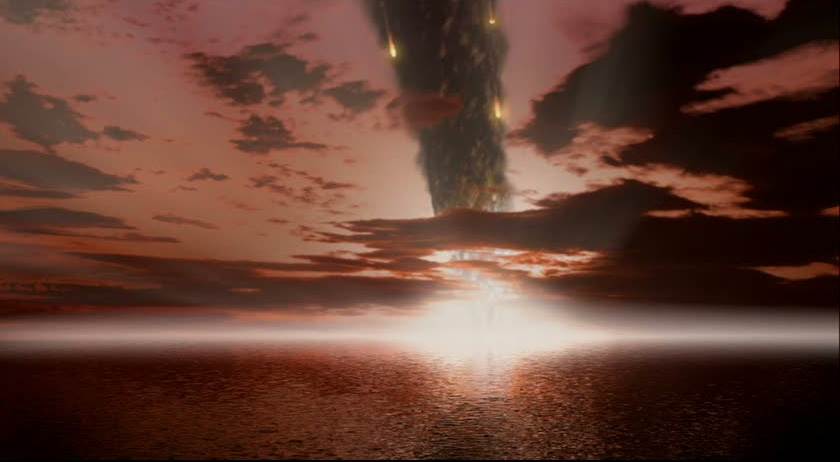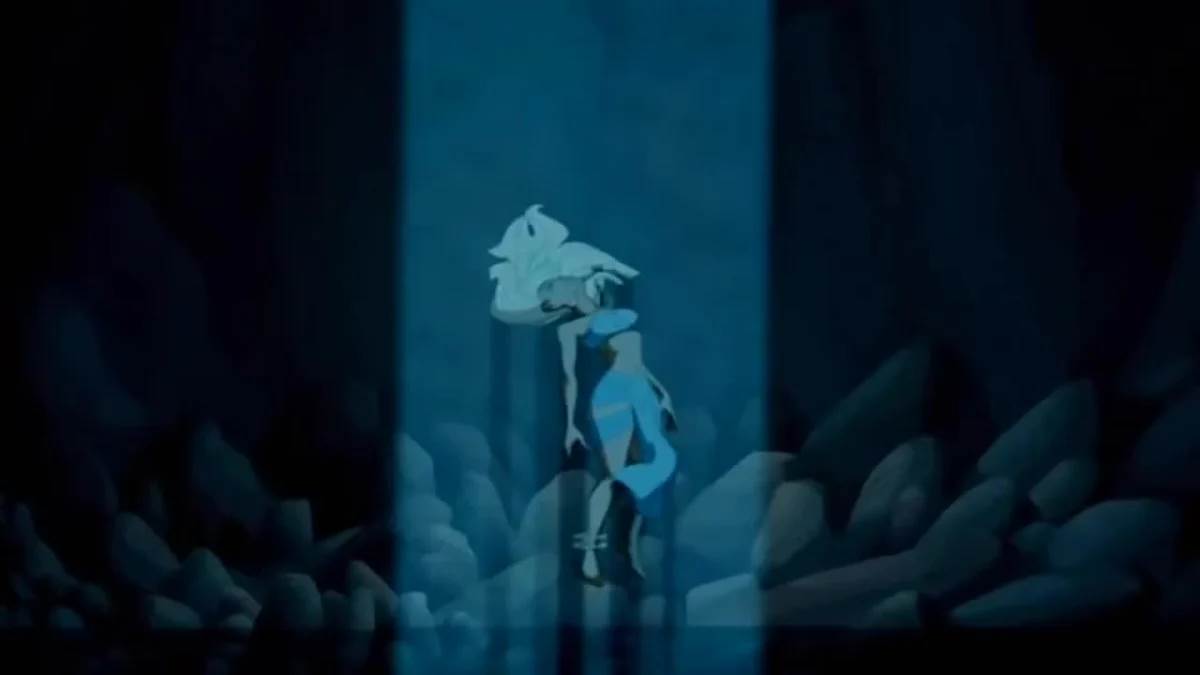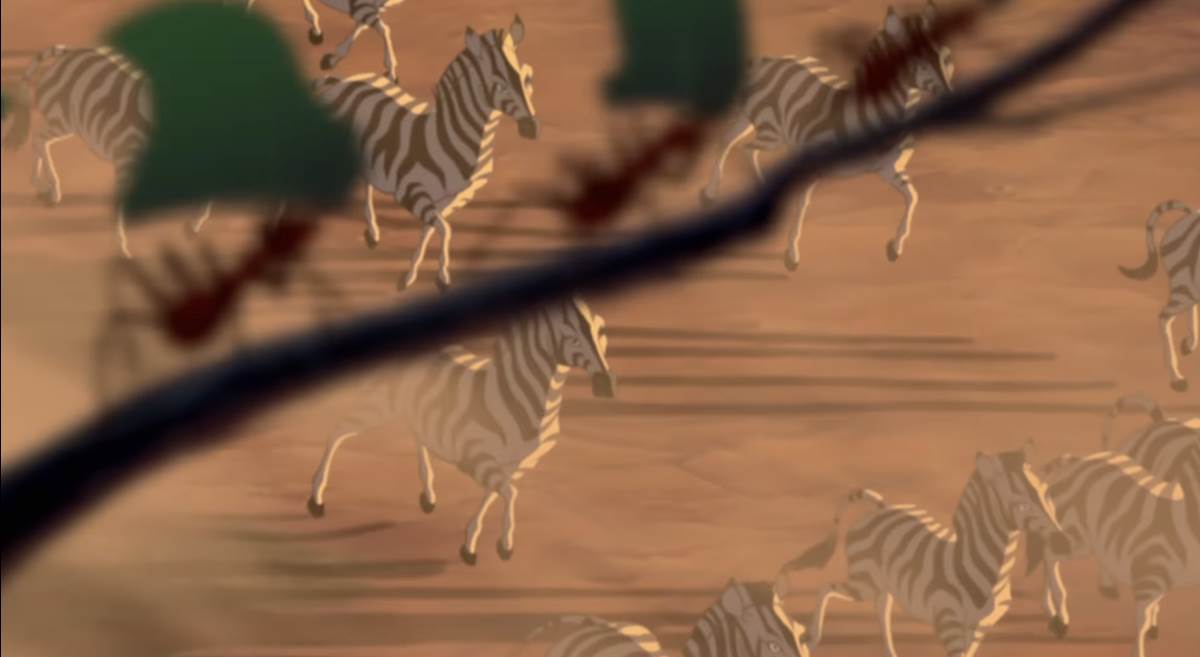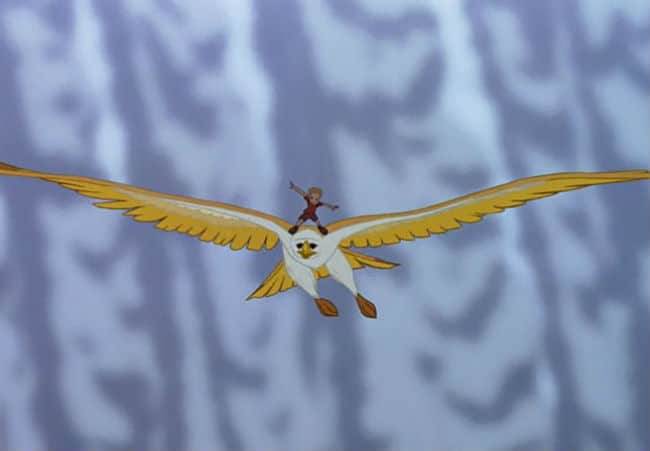To quote Guillermo Del Toro’s Oscar’s Speech, “Animation is a medium, not a genre.” As such, there are moments in the films from Walt Disney Animation Studios that have outstanding cinematography and that are simply beautiful or pleasing to the eye. Some that beautifully evoke the story that is being told, pulling on heartstrings or building the action to keep you on the edge of your seat. And tragically, some of these moments have gone overlooked because there are other memorable moments that audiences have grasped en masse, some by films released shortly before or after, and some by other moments in their own movie! Today, as we get closer to the 100th anniversary of the studio, I’m going to take a look at some of the more overlooked animated shots and sequences from Walt Disney Animation Studios, focused on the latter 50 years, from 1983 to the present day.
I’ll start with what many will fight me on when it comes to “overlooked” content, and that’s a scene – nay, a moment, from 2016’s Moana. The reason I say this particular moment/sequence is particularly overlooked is because there are so many other moments in the film that fans remember more.
It could be Maui’s song “You’re Welcome,” the amazing action sequences featuring the Kakamora, or the climax of the film and the showdown with Te Ka.
For me, it’s the bittersweet beauty of a single moment that takes place during the reprise of “How Far I’ll Go.” As Moana sets sail to save Motonui at the advice of her dying grandmother, she has set sail when her grandmother passes and the emotional (and literal) shockwave races down the mountainside and into the ocean, where her spirit becomes (exactly as she wanted) a beautiful bioluminescent Manta Ray that sweeps underneath Moana and further into the ocean.
It’s a tragically beautiful execution of both story and animation, where the audience is moved emotionally by what has just happened and entranced by the beauty of the art. where the lights go out and let the effects team really shine with lighting, both of the moon and the bioluminescence, taking hold. This on top of the already excruciatingly difficult water animation make these few seconds of the song and story stand out, and for me, make Moana one of the greatest examples of modern day storytelling and the art of animation from the studio.
It was a few years later when another spectacular piece of water animation appeared, and has already been largely forgotten as the studio enjoyed the success of Encanto – not to mention that the film was released in 2020, so…you know. That film would be Raya and the Last Dragon.
Set in the fictional world of Kumandra, water played a big part in the story. Even Sisu, the titular dragon, is a water dragon. However, it’s a very subtle moment early in Raya’s life where she is training as a child to protect the Dragon Gem, where we see her enter the temple with the help of her friend, Tuk Tuk. During this sequence, which is great on its own, we see water flowing upward and even up a set of stairs. From a technical standpoint, this is probably far easier than it looks, but it is executed beautifully and was even featured in teaser trailers for the film, which itself had me ready to sign up to see the film.
In the realm of character animation however, Raya and the Last Dragon is also a standout for its rather intense fight scenes that feature numerous types of martial arts styles. These happen throughout the film, but it’s one where Sisu interrupts Raya and her nemesis Namaari, that tends to stick out in the minds of most fans of the film. Yes, the one near the finale of the film is also fantastic, but I think the reveal of Sisu in her dragon form to everyone except Raya makes it a bigger showcase of the art and story.
Just like when Sisu revealed herself as a dragon to everyone around her (Yes, Raya already knew), another reveal served as a bigger plot twist and another beautiful piece of animation.
In 2012’s Wreck-It Ralph, an action-packed race scene is taking place in the video game world of Sugar Rush, which is a game world ruled by the eccentric and loveable King Candy. To save the game, he approaches Ralph to ensure that Vanellope doesn’t race, as she is a glitch in the video game and could cause the game to be unplugged, leaving all its inhabitants with nowhere to go and with the glitchy Vanellope to be caught inside and deleted. However, it is later revealed that this isn’t exactly true, and Vanellope races anyway. When King Candy discovers this, we are already in the middle of that final race scene to save the day, and he is doing whatever he can to stop her from crossing that finish line. When King Candy is attacking Vanellope, we are already under the impression that, yeah, he’s villainous, but it's more glitching that reveals the frighteningly true nature of King Candy, as he flashes and changes between his King Candy form and his 8-bit former self – Turbo, a villainous character passively mentioned a few times prior to the reveal.
The way he changes and transforms is truly magnificent and beautiful and makes him, really, the last true villain we’ve seen come from the Walt Disney Animation Studios, as Hans from Frozen was villainous sure, but put him against others like Maleficent or Ursula and he doesn’t compare. King Candy/Turbo does. Speaking of Frozen, while Wreck-It Ralph was a successful film, it was grossly overshadowed by the success of the Arendelle duo, making this moment a largely overlooked one.
But Wreck-It Ralph, Frozen, Big Hero 6, Moana, all those wouldn’t be around if it weren’t for significant achievements in animation, namely those using computers. The first of which comes from a sequence in The Great Mouse Detective.
While many point to The Little Mermaid as the start of the animation renaissance of the 80s/90s, that is largely based on box office success, as that was the first of the mega-powerhouse box office draws, namely the big four: The Little Mermaid, Beauty and the Beast, Aladdin, and The Lion King. At that same time, many advances were taking place with computers in the realm of animation. And it was all started by a mouse.
In the final moments of The Great Mouse Detective, Basil is caught in the big hero vs. villain moment of the film, as he takes on Ratigan in the inner workings of Big Ben.
All the clock gears were made digitally and incorporated into the film, thus marking the first computer animated sequence in an animated film.
While largely unpublicized, computers were here to stay in the world of animation and we’ll get to that a little later. As we are discussing overlooked moments though, I have to point out this wonderful moment from Oliver & Company, which was next in the pipeline after The Great Mouse Detective. Using advancements, fans might look back and now recognize the use of computers in the chase scene and much of the New York traffic while on the city streets. However, I would like to draw attention to a musical number, as so many more musical numbers would follow with cinematic beauty in animation, and that would be “Perfect Isn’t Easy.”
The song, wonderfully performed by the talented Bette Midler seems akin to other fare of the era, until a moment at the end of the song when Georgette holds those notes as she dances her way down a staircase. It's a powerhouse moment for Disney music and Disney animation, and definitely served as a precursor to camera moves in the art form like the generation-defining ballroom moment in Beauty and the Beast.
If we’re looking at pure cinematography in animation though, I have to point to two examples from the early 2000’s. DINOSAUR was a beautiful experiment with the artform and Disney’s first real exploration with CG character animation. However, unlike what Pixar Animation Studios was doing at the time with full-length features all done in computer animation, Disney set out for something different, combining their CG characters with live-action backgrounds and effects.
The end result looks beautiful, but was largely criticized for focusing more on the technical gimmick of blending the mediums than on the actual story. That said, it’s that initial asteroid impact that is one of the most overlooked moments in animation, I would say period, not just of the early ‘00s. Filmed like an action movie, even with sweeping POV shots, and featuring fully realized CG characters running throughout the scene – the asteroid impact serves as probably the most memorable part of the film.
Say what you will about Atlantis: The Lost Empire, this film is a cult classic for a reason. Not only did it attempt to break the mold of rather formulaic films of the era, the Indiana Jones vibe of the film made it appealing to boys – something the studio felt they should embrace after the emphasis on Ariel, Belle, Jasmine, Pocahontas, and Mulan in the years before it.
While fans of the film will point to climactic moments like the encounter with the Leviathan or the big battle at the end of the film with Roarke and his flying machine as what they remember most, others will point to the moment when the group discovers the Crystal Chamber, and the cinematic nature of when Kida is transformed.
While nothing about the scene is particularly innovative or serves as a technical milestone like other things I’ve listed, this scene is a true exercise in the blending of animation and cinema. The movement of the camera, the play of the lighting, the monolithic rocks crashing down around Kida as she comes back, fully protected. It’s no wonder that so many fans of the film want this one to be among the list of live-action remakes from Walt Disney Pictures.
And I can’t believe I’m even mentioning this as “overlooked,” but cinematography and shots come center stage in The Lion King’s opening number, “Circle of Life.” Again, it’s one moment that I will point to – others will say “oh yeah, the landscapes with the birds flying overhead, or the sweeping shot of Zazu coming into Pride Rock. Nope, its that one little rack zoom, where the camera lens shifts focus from some galloping zebra to some ants crawling across a twig.
The whole sequence was so cinematic and so powerful, that remember, “Circle of Life” served as the trailer to the film. Nothing more, nothing less. It was just this opening and then became the most successful animated film in history (currently, it’s live-action/computer animated counterpart is).
These kinds of camera shots would not be able to be used in traditional animation, had it not been for a certain technological advancement…
At a certain point in the 80’s, Walt Disney Animation Studios (then Disney Feature Animation) began working with a then-little known computer graphics company – Pixar. While collaborating, they built an innovative system that would change the face of the artform – the Computer Animation Production System (sometimes called the Computer Animation Post-Production System) – or “CAPS.”
Using this system, animator’s drawings can be directly scanned into the computer where they are digitally painted and assembled with other elements of the film, including backgrounds, effects, and camera moves can be programmed directly into the system. The first time anyone saw this used, they had no idea at the time. This was in the finale of The Little Mermaid, when King Triton casts a rainbow and sends Ariel and Eric on their way to their happily ever after.
However, it was the next film from the studio that was made completely, 100%, with CAPS. And according to Peter Schneider, then head of Disney Feature Animation, it was the first digital movie ever. That film: The Rescuers Down Under. Like others I’ve mentioned on this list, it was so grossly overshadowed by another film, in this case, two films, as it was sandwiched between The Little Mermaid and Beauty and the Beast. I even mentioned it already, and many point to the ballroom scene of Beauty and the Beast as the “Whoa!” moment from that era of animation.
The Rescuers Down Under immediately set the stage for something different (technically speaking) when it opened with a long shot through the grass of Australia as its title card. However, the true tour de force at the time came from a whole sequence – “Cody’s Flight.”
Sweeping shots, changing lenses, it’s a drool worthy performance by all the animators involved in the process and backed up by an amazing score by Bruce Broughton. Disney Parks fans might know his work from that other big-screen flying experience – Soarin’ Around the World.
Speaking of Disney Parks fans, I heard a number of you question who the big bird was (Marahute) and Cody for that matter as they appeared in Disneyland’s “Wondrous Journeys,” further validating how overlooked this scene and movie is.
The Rescuers Down Under, Oliver & Company, DINOSAUR, and each of the films mentioned above are now streaming on Disney+ so you can watch them in full for yourself.

